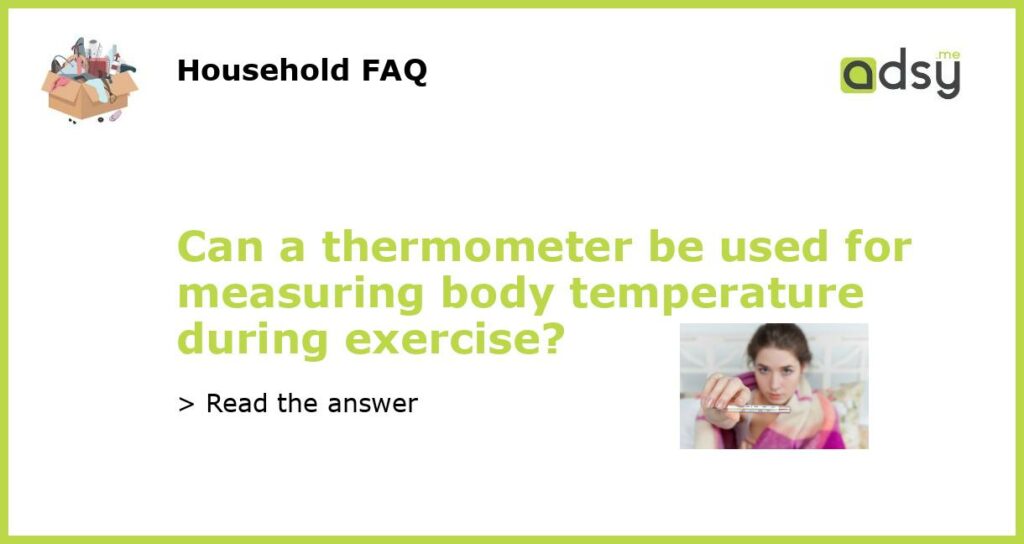Yes, a thermometer can be used for measuring body temperature during exercise
Body temperature is an important indicator of our overall health and well-being. During exercise, our body temperature tends to increase due to increased metabolic activity and the release of heat through sweating. Monitoring body temperature during exercise is crucial to ensure that we are not pushing ourselves too hard and risking overheating or heat stroke. While there are specialized devices such as heart rate monitors that can track body temperature, a simple thermometer can also be used effectively.
Why use a thermometer?
Using a thermometer to measure body temperature during exercise can provide a quick and convenient way to monitor changes in temperature. Unlike other devices that may require the use of multiple sensors or electrodes, a thermometer is a simple and affordable option that can be easily carried around. Additionally, thermometers are easily accessible and can be purchased from various retailers or online stores.
How to measure body temperature during exercise using a thermometer?
To measure body temperature during exercise using a thermometer, follow these steps:
1. Select a suitable thermometer: There are various types of thermometers available in the market, including digital thermometers and mercury thermometers. Choose a thermometer that is reliable, accurate, and easy to read. Digital thermometers are often preferred due to their quick and accurate readings.
2. Prepare the thermometer: Ensure that the thermometer is clean and in good working condition. If using a digital thermometer, insert fresh batteries if needed. If using a mercury thermometer, shake it down to below the lowest temperature level before use.
3. Choose a measuring site: The most common site for measuring body temperature during exercise is the underarm (axillary temperature). Other options include the mouth (oral temperature) or ear (tympanic temperature). Choose a site that is comfortable, easy to access, and suitable for the type of thermometer being used.
4. Take the measurement: Place the thermometer directly on the selected measuring site and hold it in place for the recommended duration (usually a few seconds to a minute). Follow the instructions provided with the thermometer for accurate measurement. Digital thermometers often have a beep or indicator to signal when the reading is complete. For mercury thermometers, read the temperature level carefully at eye level.
Limitations of using a thermometer during exercise
While a thermometer can be used to measure body temperature during exercise, it is important to note that there are some limitations to consider:
1. Inaccuracy: While digital thermometers are generally accurate, they may not provide the same level of precision as specialized devices designed specifically for monitoring body temperature during exercise.
2. Discomfort: Some individuals may find it uncomfortable to hold a thermometer in place during intense physical activity, which can impact the accuracy of the measurement.
3. Limited data: Using a thermometer only provides a single data point and does not provide continuous monitoring of body temperature throughout the exercise session. More advanced devices, such as heart rate monitors, can provide continuous monitoring and additional data related to heart rate and calories burned.
4. Safety concerns: It is important to prioritize safety and not compromise the safety of the exercise session by constantly monitoring body temperature. If you feel unwell during exercise, it is advisable to stop and seek medical attention if necessary.
While specialized devices may offer more advanced features, a thermometer can still be used effectively to measure body temperature during exercise. It provides a quick and convenient way to monitor changes in temperature, and is easily accessible and affordable. However, it is important to consider the limitations of using a thermometer and prioritize safety during exercise. If you have any concerns about your body temperature or overall health, it is best to consult with a healthcare professional.






